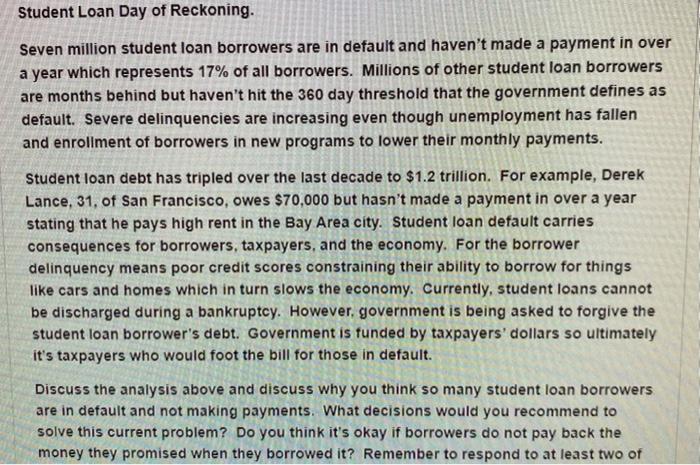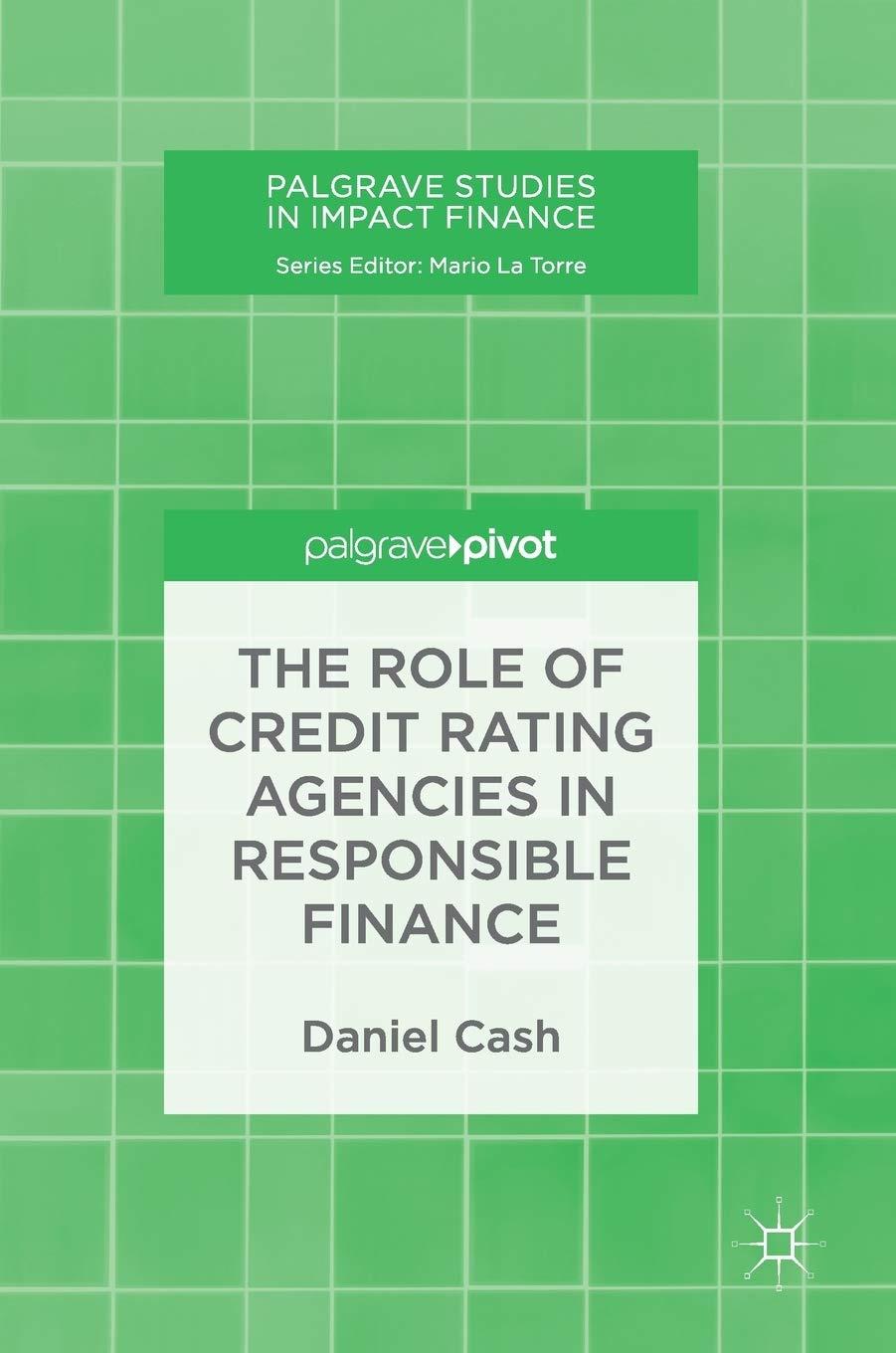Student Loan day of reckoning

Student Loan Day of Reckoning. Seven million student loan borrowers are in default and haven't made a payment in over a year which represents 17% of all borrowers. Millions of other student loan borrowers are months behind but haven't hit the 360 day threshold that the government defines as default. Severe delinquencies are increasing even though unemployment has fallen and enrollment of borrowers in new programs to lower their monthly payments. Student loan debt has tripled over the last decade to $1.2 trillion. For example, Derek Lance, 31, of San Francisco, owes $70,000 but hasn't made a payment in over a year stating that he pays high rent in the Bay Area city. Student loan default carries consequences for borrowers, taxpayers, and the economy. For the borrower delinquency means poor credit scores constraining their ability to borrow for things like cars and homes which in turn slows the economy. Currently, student loans cannot be discharged during a bankruptcy. However, government is being asked to forgive the student loan borrower's debt. Government is funded by taxpayers' dollars so ultimately it's taxpayers who would foot the bill for those in default. Discuss the analysis above and discuss why you think so many student loan borrowers are in default and not making payments. What decisions would you recommend to solve this current problem? Do you think it's okay if borrowers do not pay back the money they promised when they borrowed it? Remember to respond to at least two of Student Loan Day of Reckoning. Seven million student loan borrowers are in default and haven't made a payment in over a year which represents 17% of all borrowers. Millions of other student loan borrowers are months behind but haven't hit the 360 day threshold that the government defines as default. Severe delinquencies are increasing even though unemployment has fallen and enrollment of borrowers in new programs to lower their monthly payments. Student loan debt has tripled over the last decade to $1.2 trillion. For example, Derek Lance, 31, of San Francisco, owes $70,000 but hasn't made a payment in over a year stating that he pays high rent in the Bay Area city. Student loan default carries consequences for borrowers, taxpayers, and the economy. For the borrower delinquency means poor credit scores constraining their ability to borrow for things like cars and homes which in turn slows the economy. Currently, student loans cannot be discharged during a bankruptcy. However, government is being asked to forgive the student loan borrower's debt. Government is funded by taxpayers' dollars so ultimately it's taxpayers who would foot the bill for those in default. Discuss the analysis above and discuss why you think so many student loan borrowers are in default and not making payments. What decisions would you recommend to solve this current problem? Do you think it's okay if borrowers do not pay back the money they promised when they borrowed it? Remember to respond to at least two of








